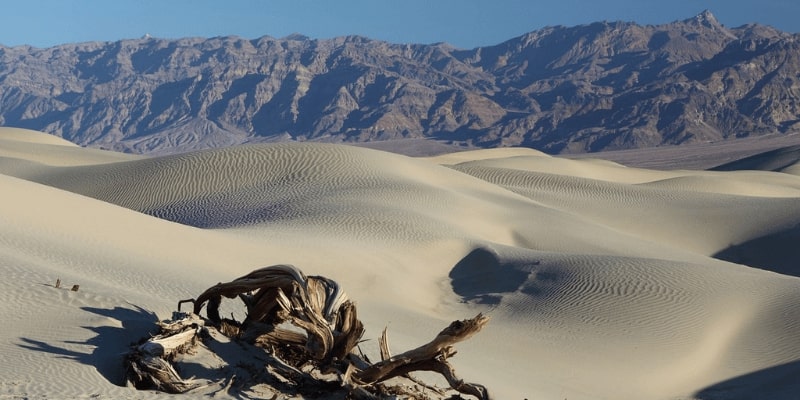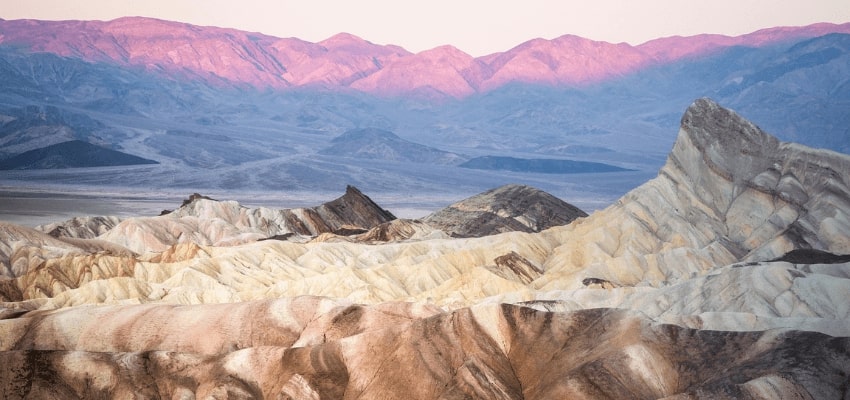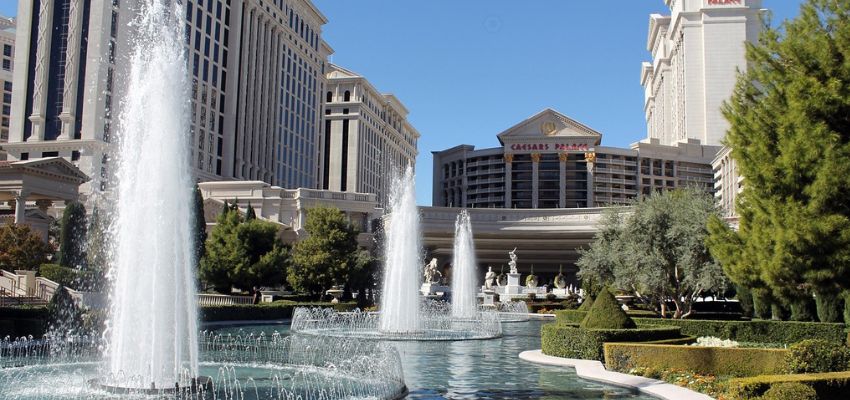9 Reasons to Visit Death Valley Next Time You’re in Las Vegas
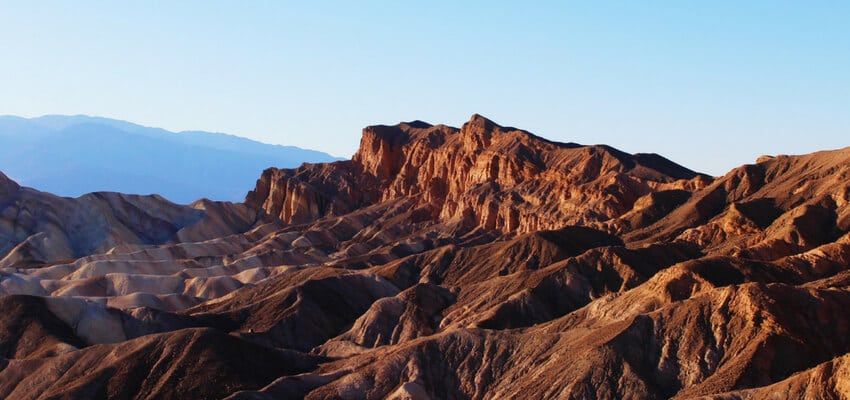
If you’re searching for an excursion beyond the limits of Las Vegas but don’t have the time to journey to the Grand Canyon, don’t despair. Between the Valley of Fire to east, Red Rock Canyon to the north, and Death Valley to the west, there is no shortage of nearby places to visit from Las Vegas.
We’ve already covered why you should visit Red Rock Canyon and the Valley of Fire. Next up: Death Valley.
Death Valley National Park is the largest national park in the lower 48 states, covering an area of over 3,000 square miles. It’s also the lowest, driest, and hottest area in North America. Here are 9 reasons why you should visit Death Valley:
1. It's close to Las Vegas
Located approximately 130 miles from Las Vegas, Death Valley is only about a 2 hour drive from the Strip. It may not be as close as nearby Red Rock Canyon (which you can actually see from the Strip), but its proximity to Sin City makes Death Valley an easy day trip, whether you‘re looking for a kid-friendly adventure or to escape the action of the Strip after a night on the town.
2. The geography
The oldest rocks in Death Valley are over 1.7 billion years old, but Death Valley as we see it today is comparatively young.
The region was formed about three million years ago through a geological process called “Basin and Range”, which occurs when the Earth’s crust stretches and develops faults to accommodate the extension. But basin and range processes occur a little differently in Death Valley—because of the unique strike-slip faults that perpendicularly border the central extent of the region, the valleys formed by the basin and range process are wider and exhibit more “subsidence”. That means that the gradual sinking or caving in of the “basin” part of the process is more pronounced in Death Valley than anywhere else. This leads to some pretty cool formations—keep reading to learn more.
3. The range
Because of the unique development of the basin and range process in this area, Death Valley contains an extreme range of elevations and is home to a wide variety of different geological formations, including:
- Salt flats: The area’s major salt pan covers an area larger than 200 square miles.
- Sand dunes: The Mesquite Flat Sand Dunes are the largest dune field in the park, containing crescent, linear, and star-shaped dunes.
FUN FACT: The sand dunes in Death Valley National Park have been used to film several iconic films, including Star Wars.
- Mountains: The highest peak in Death Valley is Telescope Peak, which reaches over 11,000 feet above sea level. It’s also the tallest peak in the Panamint mountain range.
- Badlands
- Valleys
- Canyons
4. The views
Thanks to the extreme range of elevations in Death Valley, the area is home to a variety of astounding viewpoints. Here are some highlights:
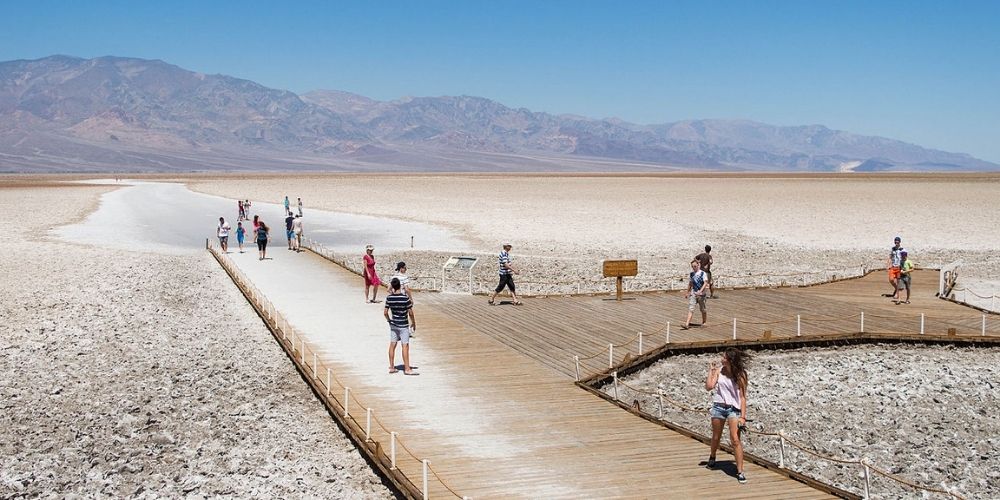
Badwater Basin
Located in the south end of the National Park, Badwater Basin is made up of almost pure table salt. It sits at an elevation of 282 feet below sea level, making it the lowest point of elevation in North America, and the second lowest point of elevation in the entire western hemisphere.
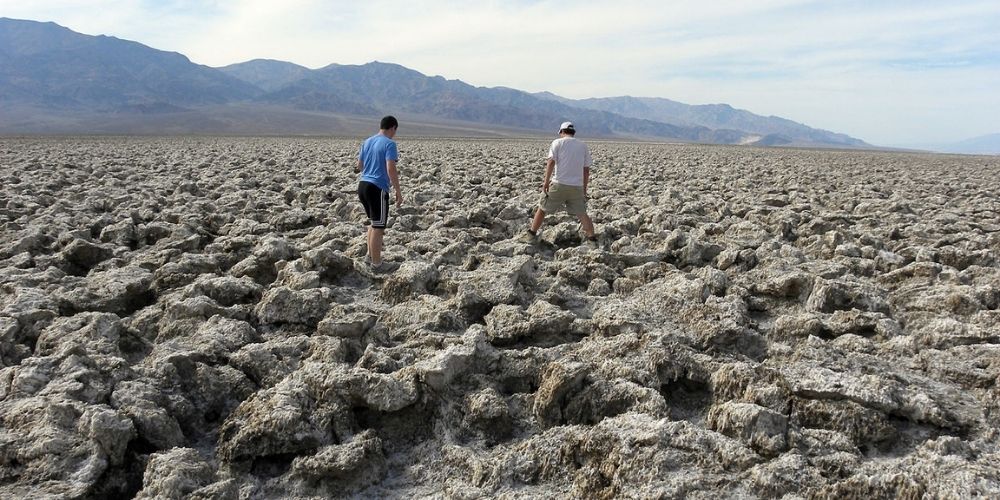
Devil's Golf Course
Put away your clubs—the Devil’s Golf Course isn’t actually a golf course. It’s a large area of rock salt that’s been slowly eroded by wind and rain to form jagged spires with a menacing serrated appearance so pronounced it’s said that only the devil could play golf on such rough links.
PRO TIP: Bend your ear to the ground—you’ll hear the sound of billions of tiny salt crystals bursting apart as they expand and contract in the heat.

Zabriskie Point
Zabriskie Point is the most famous viewpoint in Death Valley National Park. Overlooking the colorful badlands of Furnace Creek and beyond to the Panamint Mountains in the distance, this overlook is especially popular at sunrise and sunset.
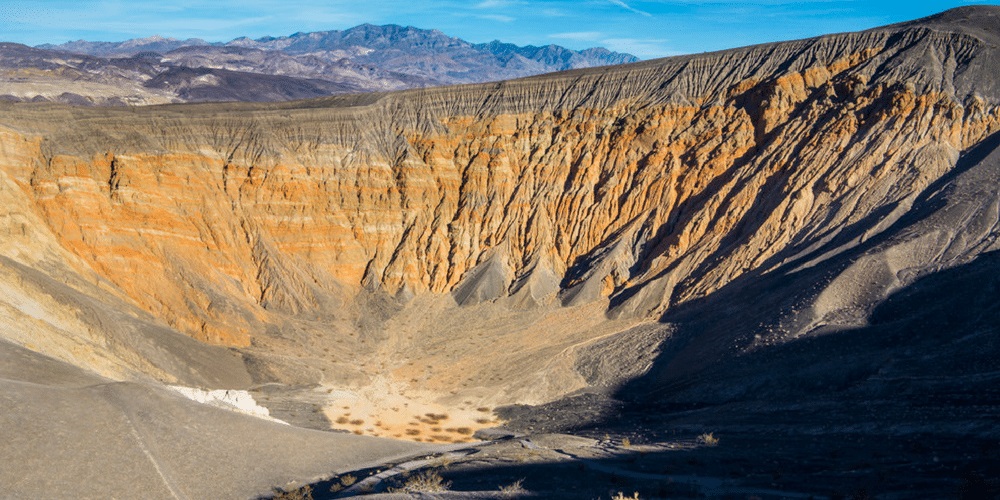
Ubehebe Crater
This giant crater was caused by a volcanic eruption, and measures about half a mile wide and 400 feet deep.
5. The temperatures
Death Valley is the hottest and driest place in North America. In fact, it’s so hot that many calculations of the highest daily temperatures in the country omit it as a matter of course.
HOT STUFF: Death Valley holds the world record for the highest reliably recorded air temperature—on July 10, 1913, the mercury reached a whopping 134 degrees at Furnace Creek. According to the NOAA, it also earned the all-time high temperature record for any weather station in the world this July, with an average temperature of 108.1 degrees.
The average winter temperature hangs around a balmy 65-76 degrees – perfect for people looking for a warm escape from their regular snowy climate. In the summer, however, average temperatures easily climb above 100 degrees, so be sure to pack extra water and wear appropriate clothing.
Why so hot? Along with the area’s lack of surface water and low elevation, Death Valley’s extreme temperatures result from a climatological phenomenon called the “rainshadow effect”: As warm, moist air masses from the nearby Pacific Ocean are forced above the mountains that surround the valley, they lose moisture. The resulting dry air causes higher average temperatures and low precipitation levels.
6. The wildlife and vegetation
Death Valley is anything but dead. While some areas are generally devoid of life (such as salt pans and some of the lower slopes of the surrounding mountain ranges), other places where water is more abundant, like the higher mountain ranges, are home to thriving communities of wildlife and vegetation, including:
- 51 species of mammal
- 300 species of bird
- 36 species of reptile
- More than 1,000 species of plants, 23 of which are entirely unique to Death Valley
7. The wildflower bloom
Every spring, cooler and wetter winter weather enables wildflowers to flourish throughout the park, even at Furnace Creek (the hottest part of the park—and the hottest part of the continent).
The annual bloom peaks in March. If you’re planning to visit in the spring, call the park ahead of your visit so you can time your trip just right. The best place to view the bloom is in the south part of the park, around Badwater Basin towards Furnace Creek.
8. The colors
Artist’s Drive is a can’t-miss Death Valley experience. This scenic one-way 9 mile loop travels through multi-hued volcanic and sedimentary hills before passing by Artist’s Palette, where you’ll spot some of the most colorful formations.
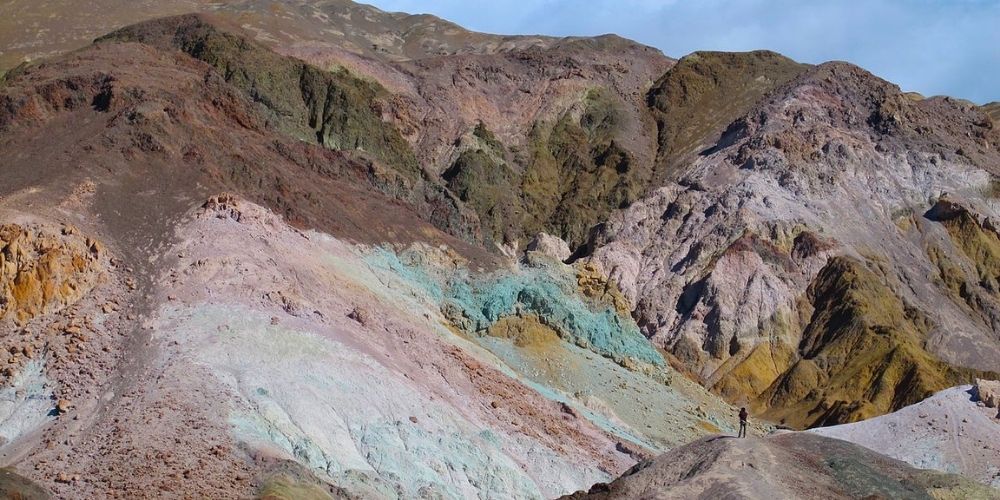
What causes the colorful terrain? The bright hues you’ll see in this breathtaking spot are created by metals in the ground:
- Red, pink, yellow: Created by iron oxide compounds
- Green: Created by the decomposition of tuff-derived mica
- Purple: Created by manganese
9. The mystery
Death Valley is home to one of the most captivating geological mysteries in the country. At Racetrack Playa, “sailing stones”—some weighing more than 650lbs—are followed long trails as though they’ve been pushed through the mud. There has been much speculation about how the stones move, but recent time lapse photography indicates that the movement results from floating ice. Most stones move once every two or three years, and their track will last about three or four years.

Conclusion
Journey outside the limits of Las Vegas and explore Death Valley on our bus tour. See Badwater Basin, Furnace Creek, the Devil’s Golf Course, Ubehebe Crater, and more.

